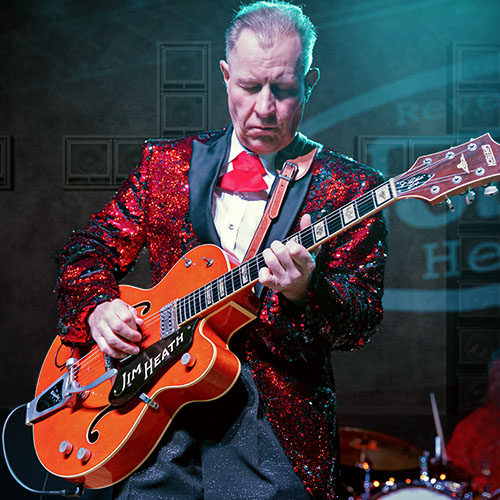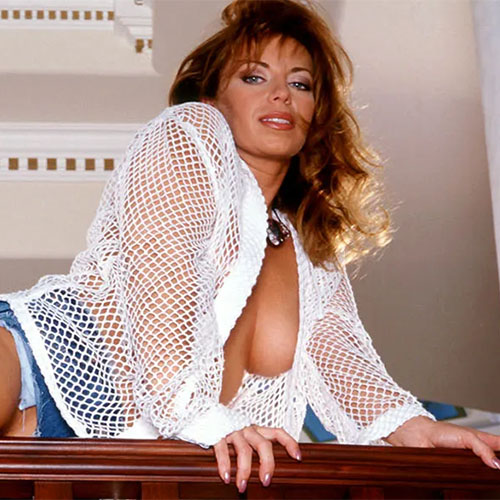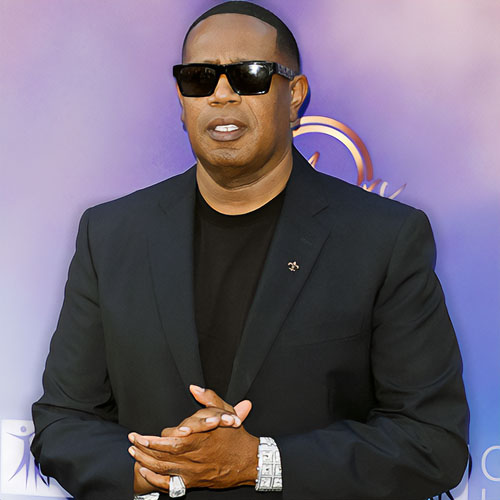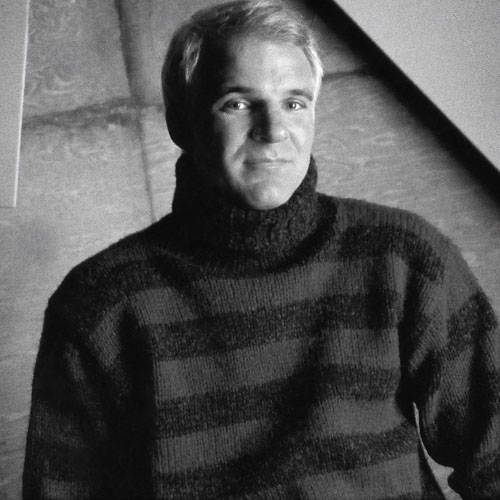It’s well past the witching hour on a late August night, and most folks in the sleepy suburban town of Saugus, California, have been tucked away in bed for hours. But in a wooden-crosses-strewn field that resembles a pet cemetery, something wicked this way comes.
Rob Zombie Sounds
At first, all is calm as the temperature drops to a brisk 45 degrees and a layer of fog drifts lazily across the ground. Then a gaunt, freakish figure emerges from the nearby woods, shuffling through the grass, eyes focused on an open Bible. He wears a red dress and jeans torn at the knees. His face is the color of typing paper, and a black upside-down cross has been etched on his forehead. Moments later, the woodsman is joined by two more misfits: a giggling vixen in a bloodstained wedding dress and a deformed giant clad in a superhero costume, replete with black cape and red undies, kneeling about ten yards from the trio is a dark powerful presence — part Charles Manson part Grizzly Adams, dressed from head to toe in black. He dips a brush into a bucket and dabs one of the crosses in the ground with a crimson fluid that trickles down the wooden stick. He raises his head and ropes of dreadlocks swing precariously close to the bucket.
He turns around to a clean-cut assistant in a baseball cap and says softly, “Bring in some more blood and splash it across [the giant’s] arms and chest.” The lackey scurries off to carry out the mysterious one’s bidding, and the freaky trio — named Otis, Baby, and Tiny — lean in to hear what else he might have to say. He is their leader. He is their director. He is Rob Zombie, master of the macabre, front man of his own eponymous band and formerly of White Zombie; also the creative force behind House of 1,000 Corpses, the feature film being shot tonight.
Zombie’s directorial debut tackles the tale of four thirtysomethings traveling cross-country in 1977 to gather information for a book on offbeat roadside attractions. While passing through the South they stumble across Captain Spaulding’s Museum of Monsters and Madmen, where they learn about the legend of a mass murderer named Dr. Satan. Intrigued, the travelers decide to investigate, only to be terrorized by a murderous nymphomaniac and her demented offspring.
“I wanted to capture the dark, Gothic vibe of classic 1930s Universal horror films like Frankenstein, combined with the sleazy, drive-in feel of movies like The Texas Chainsaw Massacre and I Spit on Your Grave,” says Zombie during a moment of downtime.
Scream fans beware — there are no Courtney Cox-caliber performers in House of 1,000 Corpses. Instead, the picture stars a bunch of Zombie’s personal B-movie laves, including Karen Black (Airport 1975, Five Easy Pieces, The Great Gatsby), who plays Mother Firefly, the scantily clad nympho; Michael J. Pollard (Bonnie and Clyde, Lost in Space [TV series], Skeeter), cast as Stucky, a collector of bizarre memorabilia; and Sid Haig (Jackie Brown, THX-1138), who plays the face-painted museum owner, Captain Spaulding. They are joined by less renowned actors, including the trio that portrays Black’s spawn: Bill Moseley (The Texas Chainsaw Massacre 2, Night of the Living Dead [remake], The Blob [remake]) as Otis; Matthew McGrory (The Dead Hate the Living) as Tiny; and first-time actress Sheri Moon (Zombie’s longtime girlfriend), who plays Baby.
For Zombie, who adopted his surname after forming White Zombie in 1985 (the group was named after a 1932 horror film starring Bela Lugosi), delivering excitement has always been more rewarding than a fistful of royalty checks. As for House, Zombie insists every penny of the $7 million budget is being stretched to achieve the most bang, slash, and shriek for the buck. “It’ll look like we had ten times the money we had,” he promises.
Indeed, Zombie works hard to realize his twisted visions. In addition to directing House, he wrote, cast, and scored the eerie picture. And he’s an exacting, details-oriented taskmaster.
Movie veteran Karen Black, who has worked with such Hollywood notables as Robert Altman and Jack Nicholson, describes Zombie as dedicated, professional, and maniacally determined to make the most of every minute. “We shoot only at night, all night every night, and nobody ever gets to go back to their trailer,” she says. “Never in my life have I done a movie where people are forbidden to go back to their rooms. It’s amazingly tiring, and yet really fun.”
There are nowhere near 1,000 corpses in his House of 1,000 Corpses, but Black and her costars creatively terminate more than a few unfortunate souls. Even so, Zombie stresses that his movie has little in common with splatter flicks that lure teenagers to the box office with the promise of bare breasts and grisly special effects.
“When I’m flipping channels, if I see that something like Friday the 13th Part V is on, I’ll go, ‘Okay, I’ll watch this,’ and five minutes later I have to turn it off,” he says, his words dripping with disgust. “Those movies are so bad. Where’s the horror? There’s no atmosphere. There’s no monsters. There’s no terror. There’s nothing.”
Zombie labored on the script for House for six months in 1999. He then approached Universal, the parent company of Geffen Records, his label at the time. Impressed by the videos he had directed for his bands, Universal Pictures inked a deal with the renaissance monster to bankroll his celluloid nightmare.
Unfortunately for Zombie, getting House of 1, ODO Corpses onto the screen has itself turned into something of a horror show. When filming began late last July, he’d planned to spend a month shooting, then three months editing and scoring. The movie was initially scheduled for release this past February. But February came and went with no release. And six months after shooting had wrapped, Zombie sounded like a man who’d begun to realize what he’d got himself into.
“To try to be editing and planning music at the same time was more work than I ever could have imagined,” he said over the phone from L.A. “When I got right down to it, it just started seeming silly to worry about a release deadline. It seemed like the wrong way to think about it. I wanted to make it good. That’s all I cared about.”
The shooting itself posed unexpected problems. “It’s always things you can never imagine,” he said. “We had lights up on cranes, and the cranes got stuck. And then the rain machine suddenly broke. Then we wanted to do a simple effect with gunshots, and it seemed like the more blood we packed in them, the less blood showed up.”
Editing and scoring proved even more problematic. A preliminary cut wasn’t ready until mid-January, and Zombie had only just begun the score. Rather than hire a composer, he insisted on creating the score himself — not only because he’s a control freak, but also because he’d seen too many good movies ruined by bad sound tracks. “Putting in the music has been the trickiest part, because it can really change the whole feel of the movie,” said Zombie. “You put in a classical piece, it seems so serious. You put in up-tempo music, it seems campy. I’m glad I’ve had time to live with it for a while so I don’t make stupid mistakes.”
At the time of this conversation, he seemed confident that House of 1,000 Corpses would be released in July. Universal flacks also insisted that a summer release was in the offing, all the better to compete in that traditionally block-buster-free season.
Then in early March came a hellish development. Universal Pictures chair-woman Stacey Snider announced that House would not be distributed by the media giant. “The film is a significant accomplishment for Rob, yet there is a visceral tone and intensity that we did not imagine from the printed page,” Snider stated in a press release. “We anticipate an NC-17 rating for the picture, which would unfortunately be at odds with our motion-picture release strategy.”
Universal, which had granted Zombie full creative control over his movie, has allowed him to retain the rights to House. And as we go to press, New Line and Miramax have both expressed interest. Zombie still hopes to release House sometime this summer, but his manager, Andy Gould, says any new studio might want to wait until October to create the buzz of a Halloween release.
“In a way I’m glad Universal gave it back to us,” he said. “They could have released it quietly without any real exposure. This way it’s ‘the movie that Universal didn’t want you to see.’ And because of that hopefully everyone will want to see it.”
We could not let you leave without giving a little guidance as to where to find Rob now. And for the those Ginger Lynn fans out there, you might enjoy her bit in The Devil’s Rejects or 31 courtesy of Mr. Zombie.
























